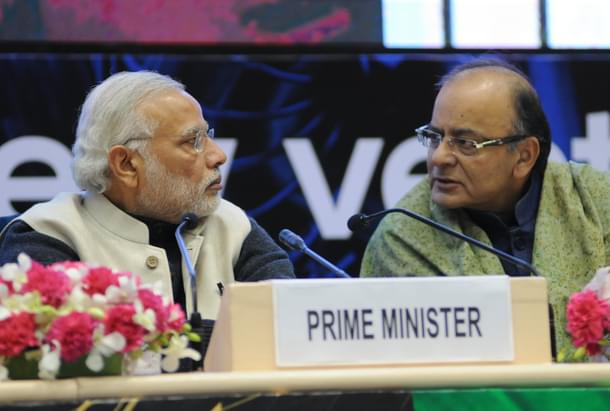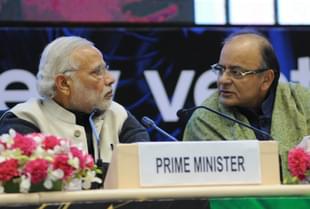Economy
Not 50, Modi Should’ve Asked For 100 Days: Cash Crunch Will Be Fully Over Only By February End
Arihant Pawariya
Dec 20, 2016, 03:17 PM | Updated 03:17 PM IST
Save & read from anywhere!
Bookmark stories for easy access on any device or the Swarajya app.


When is the cash crunch ending? This is one question that most people in India would likely have in mind at this time. Prime Minister Narendra Modi had asked for 50 days when he announced the scrapping of old high-denomination rupee notes. That deadline is here in 10 days, and we know that cash crunch is not going away by New Year day. In fact, we may not see any change in the situation even till mid-January despite more money being pumped into the banks by the Reserve Bank of India to cover the salary season.
Some analysts have predicted that the situation will not ease until the end of the first quarter of 2017. Some others are saying the total replenishment of cash will take at least six months. These are exaggerations. The State Bank of India (SBI) published its Ecowrap report yesterday (19 December), deconstructing the most plausible date when cash crunch will be over. Its results show that 50 per cent and 75 per cent of the total value of extinguished notes will most likely be supplied by December-end and January-end respectively. By February-end, almost 90 per cent of the note replacement will be complete.
So, the bottom line is that by the time you receive your salary for the month of February, in all likelihood, things will be as normal as they were at the start of November.
On 8 November: Rs 8.582 lakh crore were in Rs 500 notes and Rs 6.858 lakh crore in Rs 1,000 notes.
On 10 December: According to the SBI report, the most plausible scenario is that the RBI has printed Rs 3.432 lakh crore in Rs 2,000 notes and Rs 1,900 crore in Rs 500 notes. And there is over Rs 1.1 lakh crore in small-denomination notes. In total, 21.8 billion notes worth Rs 4.6 lakh crore have been supplied by the central bank.
Assuming that the printing started in September, the report concludes that the capacity of printing is about seven billion pieces per month.
Future course: The SBI report says that if the printing presses churn out only Rs 500 notes in December and January, then 50 per cent and 75 per cent of the value of extinguished notes will be supplied by December-end and January-end respectively.
For February, the report considers three scenarios:
1. If the RBI keeps printing only Rs 500 notes even in February, then 98 per cent of the extinguished currency will be back in circulation by the month end. However, as the finance ministry has already said it has no intention to print all of the extinguished currency, this scenario is least likely.
2. In February, if the 3.5 billion notes printed are in Rs 500 denomination and the other 3.5 billion in lower denomination notes, then 88 per cent of the extinguished currency will be back.
3. If we assume that only lower denomination notes are printed, then only 78 per cent of the extinguished currency comes back in circulation.
Now, remember that there were 17.165 billion pieces of Rs 500 on 8 November, valued at Rs 8.582 lakh crore. If we want to return to this figure once again, which is highly warranted, then the second situation is ideal as by following this path, around 17.5 billion notes of Rs 500 denomination will be printed, which is slightly higher than the 17.165 billion figure of 8 November. Following this path also means that 88 per cent of the value of the extinguished currency comes back into circulation.
Taking the loan portfolio as a proxy for cash requirement, the report concludes that cash access in the services sector is around Rs 69,000 crore, so moving from cash to digital transaction in this sector should help bring down the required cash. This is already happening. The transactions through USSD, UPI, debt card/credit card and so on are increasing by the day, and have seen a huge jump after the withdrawal of higher denomination currency.
Until now, the RBI needed to print a lot of currency in small denominations because people were using Rs 2,000 notes as storage currency and not as a medium of exchange. With Rs 500 notes, it seems like this problem will be fixed, and Rs 2,000 notes will start coming back into circulation. Then, there will be a lesser demand for lower denomination notes.
The report notes that major agriculture-oriented, cash-dependent states like Uttar Pradesh, Madhya Pradesh, Maharashtra, Andhra Pradesh, West Bengal, Punjab, Haryana, Bihar and Gujarat will face more issues. It makes the suggestion to the RBI and the government that they closely monitor “the cumulative withdrawal (a proxy for cash requirement) to cumulative deposits ratio across states and wherever it may be low could reorient the currency supply in such states.”
Arihant Pawariya is Senior Editor, Swarajya.





